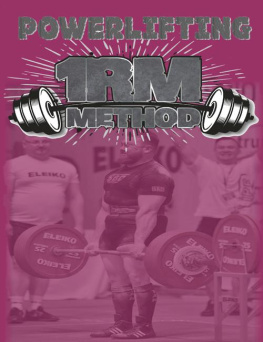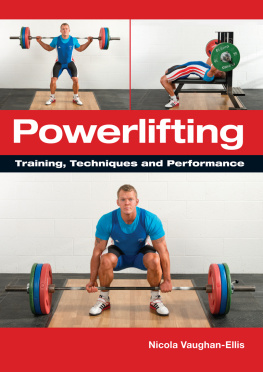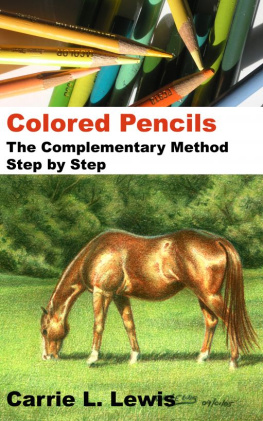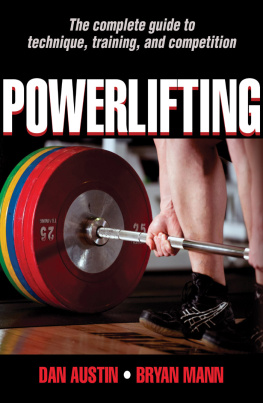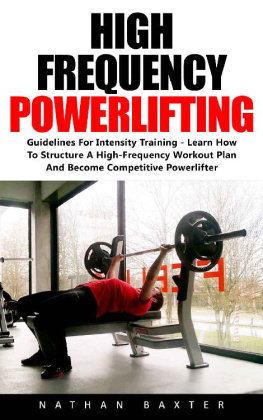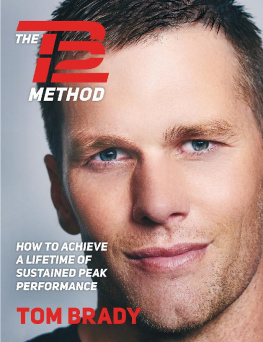
Table of Contents
3.1 Why and How the 1RM Method Came About in the First Place
4.1 The Four Major Problems with This Approach:
4.2 Different Programs Address Different Issues
Insufficient Recovery
Self-Regulation:
4.3 The 1RM Method and the Female Lifter
4.4 Non-Specific Systems for Powerlifting
5.1 Simple Overview of the System 6 & 4 Week 1RM
5.2 Stress and the 1RM Method
A specific stress response
A non-specific stress response
5.3 Adaptation to Training
5.4 The SAID Principal & 1RM Method
5.5 Before beginning the 1RM Method
7.1 How to use the 1RM Method to peak using any method that has you performing loads below 85%
7.2 How to use the 1RM Method to peak using any method that has you performing loads above 85%
8.1 1RM Method: Non-Equipped Lifting & Equipped
8.2 The 1RM Method: Key Points to Consider
9.1 Effective Warm up Strategy
9.2 Example One: Smaller, lighter intermediate female lifter warming up for a max triple
Deadlift
9.3 Example Two: Novice or intermediate 105KG class male lifter warming up for a training max double
Deadlift
9.4 Example Three:
9.5 Last-Minute Tips about Warm-Ups:
10.1 QUICK START
10.2 Complete 4 Week 1RM Method
10.3 To sum it all up
10.4 Trouble shooting
11.1 QUICK START
Week 4 of the 6 week 1RM Method
11.2 Complete 6 Week 1RM Method
Week 2 of the 6 week 1RM Method, volume triple performed on only the Squat and Bench
11.3 To Sum It All Up
11.4 Trouble shooting
13.1 Planning Recovery/Taper
13.2 Setting up your Planned Microcycle / Training Frequency
14.1 Competition Day Attempt Selections
14.2 Smart Attempt Selection Example:
14.3 Detailed Attempt Selections Information
15.1 Choosing Appropriate Assistance Exercises
15.2 Designing your Program: Suggestions on Assistance and Accessory Exercises
15.3 Planning Assistance and Accessory Exercises
Balance Capabilities:
16.1 WHEN TO CUT WATER WEIGHT
16.2 AIDS FOR CUTTING WATER
16.3 When and How to Dehydrate
16.4 COMPETITION DAY
17.1 1RM Method Super-Compensation & Mental Attitude
17.2 General Advice: Preparing to Compete
17.3 Visualisation Exercises
18.1 Ray Orlando Williams
18.2 Owen Hubbard
18.3 Kimberly C. Walford
18.4 Stephen Manuel
20. 19.1 The Squat
19.2 The Bench
19.3 The Deadlift
20.1 Nutrition Tips for Achieving the Best Possible 1RM
1
About the Author
Coach Farncombe (aka Strength Coach Farncombe ) has well over two decades of experience in strength training and conditioning. He found his way into the iron game through competing in multiple combative sports and came to love the idea of building the perfect athlete. In this pursuit, he was always drawn to the development of strength and power. In the pursuit of strength development, coach Farncombe himself decided to compete in the sport of powerlifting to better validate his concepts, competing both on a national and international level in unequipped or raw lifting when classic lifting was in its infancy. Coach Farncombe happily admits that the totals achieved by lifters back then in classic raw lifting were nothing compared to the standard set nowadays.
Coach Farncombes commitment and dedication is well known after two decades of coaching athletes to a world level. He has a considerable reputation as a coach that takes athletes to the next level in whatever sport in which they compete.
His coaching expertise has led him to study and work abroad in several countries, including the United Kingdom, the United States, and Hong Kong. He has a rich history of sharing valuable and often little-known training tips with some of the biggest names in the Iron Game.
Farncombe is an ASCC-Certified Strength & Conditioning Coach, allowing him to work with elite-level athletes in the UK and abroad. Currently, he is the Head Powerlifting Coach for Great Britain and a GBPF Powerlifting Tutor, working with numerous professional athletes in multiple elite-level sports programs.
Coach Farncombe has played an instrumental role in some of Great Britains best international performances to date, the EPF European and IPF World 2015 & 2016 classic Championships. At the 2015 IPF world powerlifting championships, coach Farncombes attempt selection protocol helped achieve the highest attempt success rate out of any country in the world with multiple entrants. As any good coach or powerlifter will tell you, attempt selection is fundamental to winning any championship.
One of his many roles as Head Coach for the UK is to identify and select new potential team members for the national team. The primary goal for any coach of this calibre is to assist, train, and maximise the success of the teams powerlifters for international competition. There is a great deal of strategy behind winning medals, acquiring team points, and calculating overall totals when competing in the elite-level of powerlifting, so coaches like Farncombe are usually the ones making the final decisions on all attempt selections. As a result, the powerlifter can spend their physical, mental, and emotional energies focussing on individual performance, while coaches like Farncombe develop the strategies that win the medals.

EPF European championships, juniors team, mens juniors 1 st place, womens juniors 3 rd place
2
Preface
This book is a complete guide to achieving a one 1RM when it counts. It provides the reader with an inside view into competition lifting at the highest level in powerlifting. Whether you use the method to help you peak for a major competition or simply want to better prepare yourself or the lifters you coach, this is the book for you.
In other chapters, he provides an in-depth look into the peaking and tapering phases of powerlifting and tremendous insights into some of the lesser known facts on how the sport works at Elite level international championships. He even takes great strides to provide a step-by-step process for performing the fundamentals to achieving a perfect squat bench, and deadlift at the highest level of powerlifting.
The 1RM Method is straight-forward with a strong emphasis on an avoidance of training to failure. Coach Farncombe references physiological principles throughout the publication to support his training method. He takes the reader through the adaptation, realisation, super compensation, and recovery phases, giving competitive lifters and athletes an abundance of valuable information in order to gain the physical and mental strength necessary to become a true contender in any strength sport.
To get the most from this, read both the quick start and the complete 1RM method before selecting which method best suits your needs. The quick start and complete 1RM repeat in some parts but you will still get a good understanding of the method to achieve the best possible results.
You can then refer back to the quick start as a means of reminding yourself if needed.
A Word from the Author
Writing this book has made it abundantly clear to me, first and foremost, that I am a much better coach than I am a writer, unlike a lot of people that only write books and call themselves coaches. To the talented few who can effortlessly do both, respect and kudos to you. I like to think that I have set out this method in an uncomplicated and easy to follow manner and hope that the reader can use the information, which has taken me many years to gather, to benefit their own training or that of the athletes they coach. Two very simple but important points to remember when peaking for a competition: technique is king, and always train to succeed, not to fail.I hope you enjoy reading this as much as I have enjoyed being able to share this with you and wish you every success in your training or coaching.
Next page
